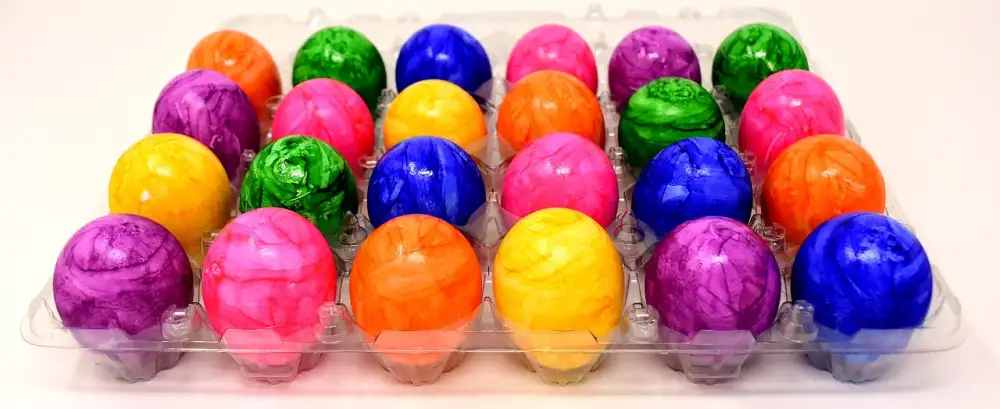Delightful Easter Bread Recipe to Elevate Your Holiday Feast at Home

Easter bread holds a special place in the hearts and homes of many cultures around the world. This traditional bread is deeply rooted in the history and significance of Easter celebrations. In Italy, it is known as "Pane di Pasqua," while in Greece, it goes by the name of "Tsoureki." The bread symbolizes abundance, renewal, and the joy of Easter festivities. Families often gather to bake and share this delicious treat, passing down recipes through generations. Join us on a flavorful journey as we explore the delightful world of Easter bread!
Ingredients for Easter Bread:
To create a delicious Easter bread, you will need a selection of essential ingredients that come together to form this festive treat. The key components include flour, yeast, eggs, sugar, and spices. Flour serves as the base of the dough, providing structure and texture. Yeast is crucial for leavening the bread, allowing it to rise and become light and airy. Eggs add richness and moisture to the dough, while sugar lends sweetness to balance out the flavors. Spices such as cinnamon or nutmeg can be incorporated to enhance the aromatic profile of the bread. These basic ingredients form the foundation for a delightful Easter bread that will be sure to impress your family and guests during the holiday season.
Preparation Steps:
1. In a large mixing bowl, combine 4 cups of flour, 1 packet of active dry yeast, 1/2 cup of sugar, and a pinch of salt.
2. In a separate bowl, whisk together 3 eggs and 1/2 cup of warm milk until well combined.
3. Gradually add the egg mixture to the dry ingredients and mix until a dough forms.
4. Knead the dough on a floured surface for about 10 minutes until smooth and elastic.
5. Place the dough in a greased bowl, cover with a damp cloth, and let it rise in a warm place for about an hour or until doubled in size.
6. Punch down the risen dough and knead it briefly before shaping it into desired Easter bread shapes.
7. Place the shaped bread on a baking sheet lined with parchment paper, cover with a cloth, and let it rise again for about 30 minutes.
8. Preheat the oven to 350°F (180°C) and bake the Easter bread for 25-30 minutes or until golden brown.
9. Allow the bread to cool before serving and enjoy this delightful treat with your loved ones during Easter celebrations.
Shaping and Decorating:
Once the dough has risen, it's time to shape your Easter bread into traditional forms. For a classic look, braid three strands of dough together to symbolize the Holy Trinity. You can also shape the dough into a round loaf with colored eggs nestled in the center before baking. To add decorative elements, brush the bread with an egg wash before baking and sprinkle with sesame seeds or colored sugar for a festive touch. Get creative with your designs, incorporating symbols like crosses or braided loops for a personalized touch that enhances both the visual appeal and symbolic significance of your Easter bread.
Baking and Serving:
Once the Easter bread has been shaped and decorated, preheat your oven to 350°F (175°C). Place the bread on a baking sheet lined with parchment paper and let it rise for another 30 minutes before baking. Bake the bread for 25-30 minutes or until it turns golden brown and sounds hollow when tapped on the bottom. Allow the bread to cool before serving. To enhance the experience, consider serving it with butter, honey, or jam. This delightful Easter treat is perfect for breakfast or as a sweet addition to your holiday feast.
Variations and Tips:
For a twist on the classic Easter bread recipe, consider adding dried fruits like raisins or cranberries for a burst of flavor. You can also experiment with different spices such as cardamom or nutmeg to enhance the aroma. To elevate the presentation, try braiding the dough or shaping it into a nest filled with colorful dyed eggs for a festive touch. Remember to let the dough rise in a warm, draft-free place to ensure a light and fluffy texture. Additionally, using high-quality ingredients like organic flour and free-range eggs can make a difference in the final taste of your Easter bread. Enjoy the process of baking and get creative with your decorations to make this holiday treat truly special!
Cultural Traditions:
Easter bread holds a special place in the culinary traditions of various cultures around the world. In Italy, "Pane di Pasqua" is a sweet bread flavored with citrus zest and studded with colorful sprinkles or dyed eggs. In Greece, "Tsoureki" is a braided bread infused with aromatic spices like mahlab and mastiha resin. The Russian "Kulich" is a tall, cylindrical bread filled with raisins and topped with a sugar glaze.
In Eastern European countries like Poland and Ukraine, "Babka" or "Paska" is a rich, brioche-like bread often shaped into intricate designs symbolizing renewal and rebirth. In Spain, "Mona de Pascua" is a cake-like bread decorated with hard-boiled eggs to commemorate the end of Lent.
Each culture infuses its Easter bread with unique flavors and shapes, reflecting the diversity of traditions and beliefs surrounding this joyous holiday. By exploring these cultural variations, we can appreciate the rich tapestry of Easter celebrations worldwide.
In conclusion, Easter bread is not just a delicious treat but also a symbol of tradition and togetherness during the Easter holiday. By trying your hand at making this delightful bread at home, you can create cherished memories with your loved ones and experience the joy of sharing homemade goodness. Whether you follow a classic recipe or add your own twist, the process of baking Easter bread is a rewarding culinary adventure that brings people together in celebration. So why not embark on this flavorful journey and elevate your holiday feast with a freshly baked loaf of Easter bread? Happy baking!
Published: 08. 05. 2024
Category: Home



